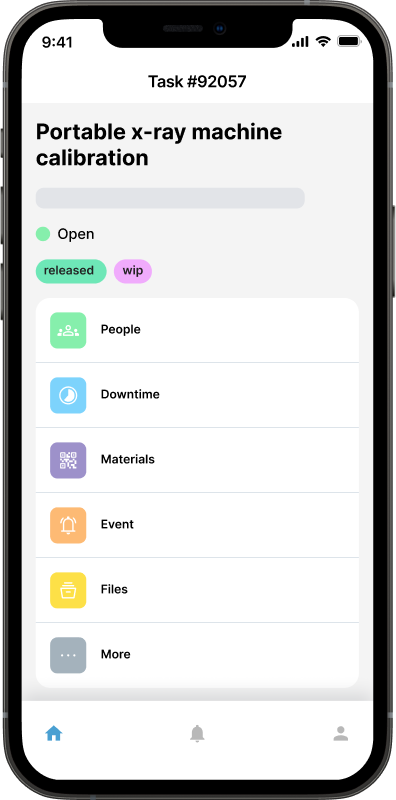Why CMMS Is Essential for Upkeep in Small and Medium-Sized Businesses

For small and medium-sized businesses (SMBs) in any industry, staying competitive means getting the most from every asset, every employee, and every operational dollar. For businesses that rely on equipment, facilities, or physical infrastructure, maintenance and upkeep are at the heart of long-term success. But when resources are tight and teams are small, staying on top of everything, from routine upkeep to unexpected repairs, can be overwhelming.
That’s where a Computerized Maintenance Management System (CMMS) comes in. For SMBs looking to streamline maintenance, reduce costs, and improve uptime, a modern CMMS is more than a convenience—it’s a crucial tool for effective upkeep and operational stability.
In this post, we’ll explore why CMMS software is essential for SMBs like medium-sized manufacturing facilities, independent gyms, churches, private schools, property management companies, and more. These organizations all share a common need: structured, cost-effective, and scalable upkeep solutions.
Understanding the Unique Upkeep Challenges of SMBs
Unlike large enterprises with dedicated maintenance departments and endless resources, SMBs often operate with small teams wearing many hats. Maintenance duties may fall to general operations staff or technicians juggling multiple responsibilities. As a result, upkeep can slip through the cracks.
Typical challenges faced by SMBs:
Lack of organization: Maintenance tasks are tracked in spreadsheets, notebooks, or just remembered mentally.
No clear visibility: Managers don’t know which assets are due for service or which work orders are still open.
Reactive repairs dominate: Preventive maintenance is often postponed, leading to costly breakdowns.
Inventory guesswork: Parts and tools are often missing, misplaced, or overstocked without real tracking.
This scenario applies equally to a 50-machine manufacturing plant, a local gym managing HVAC and fitness equipment, or a church juggling facility upkeep and community-use spaces. The result is the same: unplanned downtime, higher repair costs, and inefficient upkeep that directly impacts the bottom line.
CMMS: The Game-Changer for Small Business Upkeep

A CMMS is software designed to help businesses plan, track, and optimize their upkeep tasks, assets, and maintenance schedules. While once considered enterprise-only, modern CMMS platforms like Maintainly now offer affordable, user-friendly solutions tailored for SMBs.
Here’s how a CMMS transforms upkeep for smaller operations:
1. Organized Upkeep from Day One
Forget the chaos of spreadsheets, sticky notes, or mental to-do lists. A CMMS centralizes all upkeep activities in one digital hub. Work orders, maintenance logs, and asset histories are easy to access and update, anytime, from any device.
SMBs gain structure and consistency. Maintenance becomes proactive, not reactive, and everyone knows what’s due and when.
2. Scheduled Preventive Maintenance
Preventive upkeep is critical to avoiding costly surprises. CMMS platforms let you schedule maintenance based on time, usage, or condition, ensuring your most important assets are always serviced before failure.
For a church with multiple HVAC units or a school managing lighting, plumbing, and groundskeeping, this kind of automation is a lifesaver. With automated reminders and recurring tasks, SMBs can implement a “set it and forget it” model for upkeep.
3. Asset Management Made Simple
Knowing the full history of an asset, when it was last serviced, what parts were used, and who performed the work, is gold for any maintenance program. With CMMS, every asset has its own digital profile, keeping all this data in one place.
Whether you manage a dozen treadmills in a boutique gym or forklifts in a warehouse, a CMMS makes it easy to track, schedule, and extend the life of your assets without endless paperwork.
4. Efficient Work Order Management
Work orders are the lifeblood of upkeep, and CMMS automates the entire process. From logging new maintenance requests to assigning tasks and tracking progress, work order workflows become efficient and traceable.
This is ideal for property managers fielding tenant requests or facilities managers at mid-sized manufacturing plants. Technicians can update jobs on the go using mobile access, reducing delays and eliminating the guesswork around what’s done and what’s pending.
5. Inventory and Spare Parts Control
Nothing disrupts upkeep like a missing part. CMMS platforms let you manage spare parts and inventory with precision. Track stock levels, set reorder points, and reduce overstock waste.
Gyms managing cleaning supplies or spare parts for machines, or small manufacturers tracking specialty components, benefit enormously from this level of visibility.
6. Better Compliance and Documentation
Whether you're a school following safety regulations, a food manufacturer adhering to health codes, or a church tracking facility inspections, recordkeeping is key. A CMMS automatically logs maintenance activity and stores supporting documents like service reports, invoices, or warranties.
This makes audits and inspections smoother and protects against liability.
7. Insightful Reporting and Metrics
A modern CMMS offers real-time dashboards and custom reports. You can monitor maintenance KPIs like:
Mean Time Between Failures (MTBF)
Work order completion rates
Asset downtime
Maintenance costs
These insights help SMBs evaluate their upkeep strategy, improve weak areas, and plan smarter for the future.
Affordability and Scalability: Perfect for SMB Growth
Many SMBs assume CMMS is too expensive or complex, but today’s solutions are designed to scale. You can start small, with a few users and a handful of assets, and grow over time. Pricing models are often modular or subscription-based, making CMMS software affordable even for startups.
Whether you manage a single gym location or multiple sites in a regional manufacturing business, CMMS offers long-term value far beyond its cost.
A Day in the Life: How CMMS Improves Daily Upkeep

Imagine this:
A school facilities manager starts their day by checking their CMMS dashboard.
They see three scheduled preventive tasks and two new work requests from staff.
They assign tasks to the team and monitor progress throughout the day.
The system automatically updates the asset history and parts inventory.
At the end of the week, they pull a report to review completed upkeep and trends in performance.
This is the power of CMMS. No confusion. No missed tasks. Just organized, optimized upkeep that runs like clockwork.
Upkeep Is Not Just About Equipmentt; It’s About Business Health
Good upkeep isn’t just about fixing things. It’s about avoiding breakdowns, supporting safety, reducing downtime, and giving your team the tools to succeed.
For SMBs, even one failed asset can delay production, lose a customer, or cut into already tight margins. CMMS helps safeguard operations by putting upkeep at the center of your strategy.
Make CMMS Part of Your Upkeep Strategy
Small and medium-sized businesses need every advantage they can get. In a competitive, fast-paced world, efficient upkeep is not optional, it’s essential.
A modern CMMS gives you:
Clear visibility
Automated preventive maintenance
Efficient task management
Inventory control
Real-time data and insights
Most importantly, it brings structure and reliability to your upkeep workflows, letting your business focus on growth, not firefighting.
If you’re still relying on spreadsheets, whiteboards, or memory to manage upkeep, it’s time to make the switch. A CMMS isn’t just for big companies. It’s for smart ones, no matter the size.
Explore Maintainly today and see how a simple, powerful CMMS can transform the upkeep of your small or medium-sized business.

